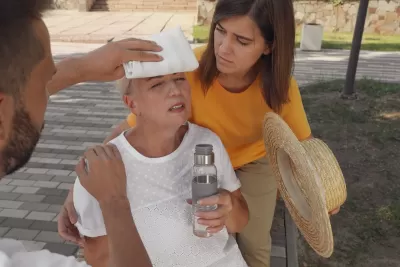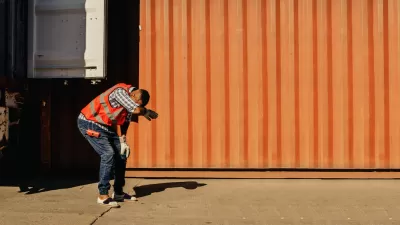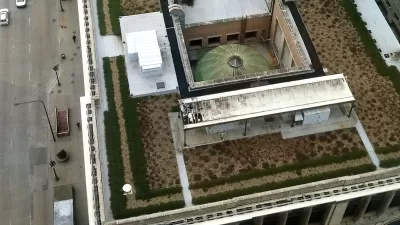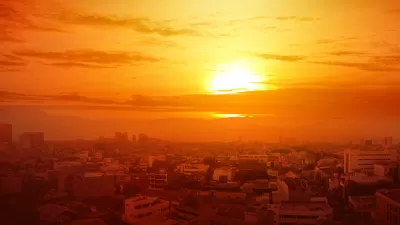Cities can protect residents from extreme heat by enhancing natural and built infrastructure, establishing heat response strategies, and implementing national policies for worker safety and disaster response.

Extreme heat is becoming increasingly common across the United States, with recent records showing the hottest months and years on record. The rising temperatures not only lead to more heat-related deaths but also impose significant economic costs. As Elizabeth Babcock and Michael Shank share in this article, while the long-term solution to this problem involves reducing fossil fuel consumption, there are several immediate actions cities can take to mitigate the impact of extreme heat and protect residents.
One effective approach is enhancing natural and built infrastructure to cool urban environments. Expanding tree canopies, especially in disadvantaged communities, can lower temperatures significantly. Green roofs, reflective cool roofs, and converting community spaces like libraries, recreation centers, and schools into cooling centers are practical measures. Additionally, creating resilience hubs in various community spaces can provide essential services and support year-round, helping residents cope with extreme heat.
Human and policy infrastructure also play crucial roles in mitigating heat impacts. Cities can appoint chief heat officers to coordinate heat response efforts across all departments and develop comprehensive heat strategies. Partnering with community groups to distribute cooling resources and focusing on efficient, low-carbon cooling solutions are essential steps. Nationally, establishing a heat safety standard for workers and creating a disaster declaration capacity for heat at the federal level are necessary to protect public health and ensure a robust response to extreme heat events.
To learn more, please read the source article.
FULL STORY: 4 ways that cities can and should protect their citizens from extreme heat

Study: Maui’s Plan to Convert Vacation Rentals to Long-Term Housing Could Cause Nearly $1 Billion Economic Loss
The plan would reduce visitor accommodation by 25,% resulting in 1,900 jobs lost.

North Texas Transit Leaders Tout Benefits of TOD for Growing Region
At a summit focused on transit-oriented development, policymakers discussed how North Texas’ expanded light rail system can serve as a tool for economic growth.

Using Old Oil and Gas Wells for Green Energy Storage
Penn State researchers have found that repurposing abandoned oil and gas wells for geothermal-assisted compressed-air energy storage can boost efficiency, reduce environmental risks, and support clean energy and job transitions.

Private Donations Propel Early Restoration of Palisades Playground
Los Angeles has secured over $1.3 million in private funding to restore the Pacific Palisades playground months ahead of schedule, creating a modern, accessible space that supports community healing after recent wildfires.

From Blight to Benefit: Early Results From California’s Equitable Cleanup Program
The Equitable Community Revitalization Grant (ECRG) program is reshaping brownfield redevelopment by prioritizing projects in low-income and environmental justice communities, emphasizing equity, transparency, and community benefits.

Planting Relief: Tackling Las Vegas Heat One Tree at a Time
Nevada Plants, a Las Vegas-based nonprofit, is combating the city’s extreme urban heat by giving away trees to residents in underserved neighborhoods, promoting shade, sustainability, and community health.
Urban Design for Planners 1: Software Tools
This six-course series explores essential urban design concepts using open source software and equips planners with the tools they need to participate fully in the urban design process.
Planning for Universal Design
Learn the tools for implementing Universal Design in planning regulations.
Ascent Environmental
Borough of Carlisle
Institute for Housing and Urban Development Studies (IHS)
City of Grandview
Harvard GSD Executive Education
Toledo-Lucas County Plan Commissions
Salt Lake City
NYU Wagner Graduate School of Public Service





























